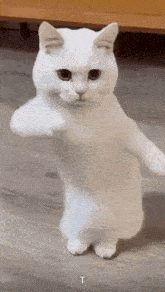About Project » History » Revision 7
« Previous |
Revision 7/30
(diff)
| Next »
Pratama Kwee BRANDON, 11/06/2025 12:17 AM

💡 About Project¶
I. Project Overview¶
Our project focuses on developing a high-quality image composition system that seamlessly merges two or more projected images into a single, visually consistent display.
Using Python and OpenCV, we employ advanced image processing techniques such as gamma correction, alpha blending, and intensity modification to eliminate brightness and color mismatches between overlapping regions.
The project is organized into sub-teams responsible for software development, UML design, testing, and wiki management. Each member plays a key role in ensuring collaborative progress and well-structured documentation.
By integrating Doxygen for code documentation and Redmine for project tracking, we aim to produce a well-documented, scalable, and reproducible system for real-time image correction and blending.
II. Motivation & Problem Statement¶
When using multiple projectors to display a single image, visible seams or brightness inconsistencies often occur in overlapping regions. These inconsistencies degrade image quality and make the final projection appear uneven.
Manual calibration methods are time-consuming and prone to human error.
Our motivation is to develop a software-based approach that automates the alignment and blending process, ensuring seamless image projection.
By leveraging the OpenCV library, the system can detect overlapping areas, apply brightness corrections, and blend images smoothly — eliminating the need for costly hardware-based calibration systems.
III. Objectives¶
- To develop an automated image blending system capable of merging two or more projections into a single seamless image.
- To apply gamma correction and intensity modification techniques to balance color and brightness across overlapping regions.
- To implement alpha blending for smooth transitions between images.
- To design and visualize the system architecture using UML diagrams.
- To document the entire project using Doxygen and manage tasks via Redmine.
IV. Key Features
1. Automated Image Blending
Uses OpenCV and user-defined parameters to automatically blend two projected images, ensuring accurate overlap and alignment.
2. Gamma Correction and Intensity Adjustment
Employs advanced color and brightness correction algorithms to maintain consistent luminance across blended areas, effectively removing visible seams and mismatches.
3. Video Blending
Leverages GPU acceleration through PyTorch to calculate per-pixel brightness for video streams, enabling real-time blending and correction.
4. User-Friendly Graphical Interface
Provides an intuitive GUI that allows users to select interpolation modes, specify overlap pixels, and control blending parameters easily.
5. Modular System Architecture
Designed using UML-based class structures that divide the project into smaller, manageable components, improving scalability and ease of feature expansion.
6. Comprehensive Documentation and Project Management
Integrates Doxygen for automated code documentation and Redmine for task tracking, ensuring transparent collaboration and efficient workflow management.
---¶
V. System Architecture
(Add later)¶
VI. Methodology and Development Process
(Add later)
a. Requirement analysis
b. Testing and Validation¶
VII. Technology Stack¶
- Python (OpenCV, NumPy)
- Doxygen
- Redmine
- Astah
VIII. Application & Impact
(Add later)¶
IX. Limitation & Future Enhancements
(Add later)¶

Updated by Pratama Kwee BRANDON 8 days ago · 7 revisions